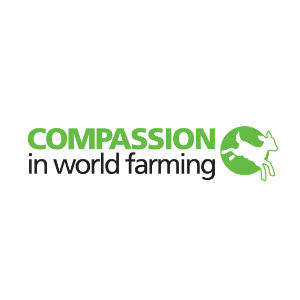A Green and Fluorescent countryside…?
 In his riposte to Clive Aslet’s Observer piece, ‘The English Countryside has never had it so good’, Tobias Jones unpicks much of that Panglossian perspective that’s had me grinding my teeth over for the past fortnight. Aslet urges readers to celebrate what he sees as an English countryside in a far better state than that which he perceived in previous decades when working for Country Life, first as a free-ranging journalist and then editor. ‘Sees’ and ‘perceives’ – as his view, whilst lyrically expressed, lacks the concentrated focus to penetrate the surface gloss.
In his riposte to Clive Aslet’s Observer piece, ‘The English Countryside has never had it so good’, Tobias Jones unpicks much of that Panglossian perspective that’s had me grinding my teeth over for the past fortnight. Aslet urges readers to celebrate what he sees as an English countryside in a far better state than that which he perceived in previous decades when working for Country Life, first as a free-ranging journalist and then editor. ‘Sees’ and ‘perceives’ – as his view, whilst lyrically expressed, lacks the concentrated focus to penetrate the surface gloss.
Jones quotes Graham Harvey’s dated, but still definitive, book, ‘The Killing of the Countryside’ which, as well as highlighting those often ploughed over figures about ‘140,000 miles of hedgerow grubbed out’ and ‘95% of herb-rich wildflower meadows’ drained and ‘improved’ since 1945, correctly identified that it was (as it continues to be) short-sighted, narrow perspective policy that drove the destruction. In particular of a form of farming that produced both good food and good countryside sustainably – half a century before that eco-buzz term had been coined:
“At the start of the last war there were almost half a million farms in Britain including part-time holdings. The majority were small, mixed units of less than 50 acres with cattle, sheep, pigs and poultry as well as some arable crops. Before the age of state protection, farmers needed to grow a range of products for financial security. If the price of any one product collapsed, there were others to buffer them against ruin.
Economically this mixed-farm structure was extremely stable. It also happened to produce a vigorous and attractive countryside, rich in wildlife and largely free of pollution… Never had the British countryside looked so good. Never had it supported a richer diversity of habitat and wild species. Yet it cost taxpayers nothing.
If the politicians had truly understood agriculture they would have recognized the mixed-farm structure as a national treasure to be nurtured and prized. Instead they set farming on a calamitous dash for intensification that was to put three-quarters of those farmers out of business.”
The statistic contained in that last sentence gets less attention than those routinely rehearsed losses to wildlife – wherein there has been an equivalent attrition of those who made a living from and on the land. In the 25 years between 1964 (before Aslet joined Country Life) and 1989, the number of farms in the UK fell by over 40%:
- From 445,000 holdings in 1964 to 252,000 by 1989 – i.e.nearly 200,000 gone in just one generation
- A further 40,000 farms have gone out of business or been amalgamated into bigger, more intensive units over the past 20 to 30 years.
Clive Aslet appears to have had an enjoyable working life; looking out through the windows of a first class railway carriage en route to appreciate the architecture of some country house or motoring up the M6 for a week-end at a great estate in Scotland. I do the same on my train journeys, albeit with more modest destinations, speculating as vistas of landscape and countryside whizz by, on what and who lives there – and daydreaming as to what I would do if I had stewardship. But knowing that, outside the bubble of that carriage and daydream, a closer, more considered scrutiny on the ground would reveal stresses and fault-lines in the physical places themselves and those seeking to make a living from them.
To recalibrate his vision, Aslet might take the train from London to Cambridge from whence he began his career as a writer. Travelling out from Kings Cross, once past the suburbia of Potters Bar and the pony paddocks of the wider, more affluent London hinterland, the train enters the bleak, fertiliser-soaked, fluorescent-green ‘fields’ of Cambridgeshire, where a few remnant hedges hang on untended and purposeless in a landscape empty of livestock and people.
A landscape turned over exclusively to pumping out crops for feeding factory-farmed pigs and poultry, for adding to highly-processed goods like margarine, or for extraction as industrial oils.
‘Cheap food’? Possibly. ‘Hurrah’? Probably not.



